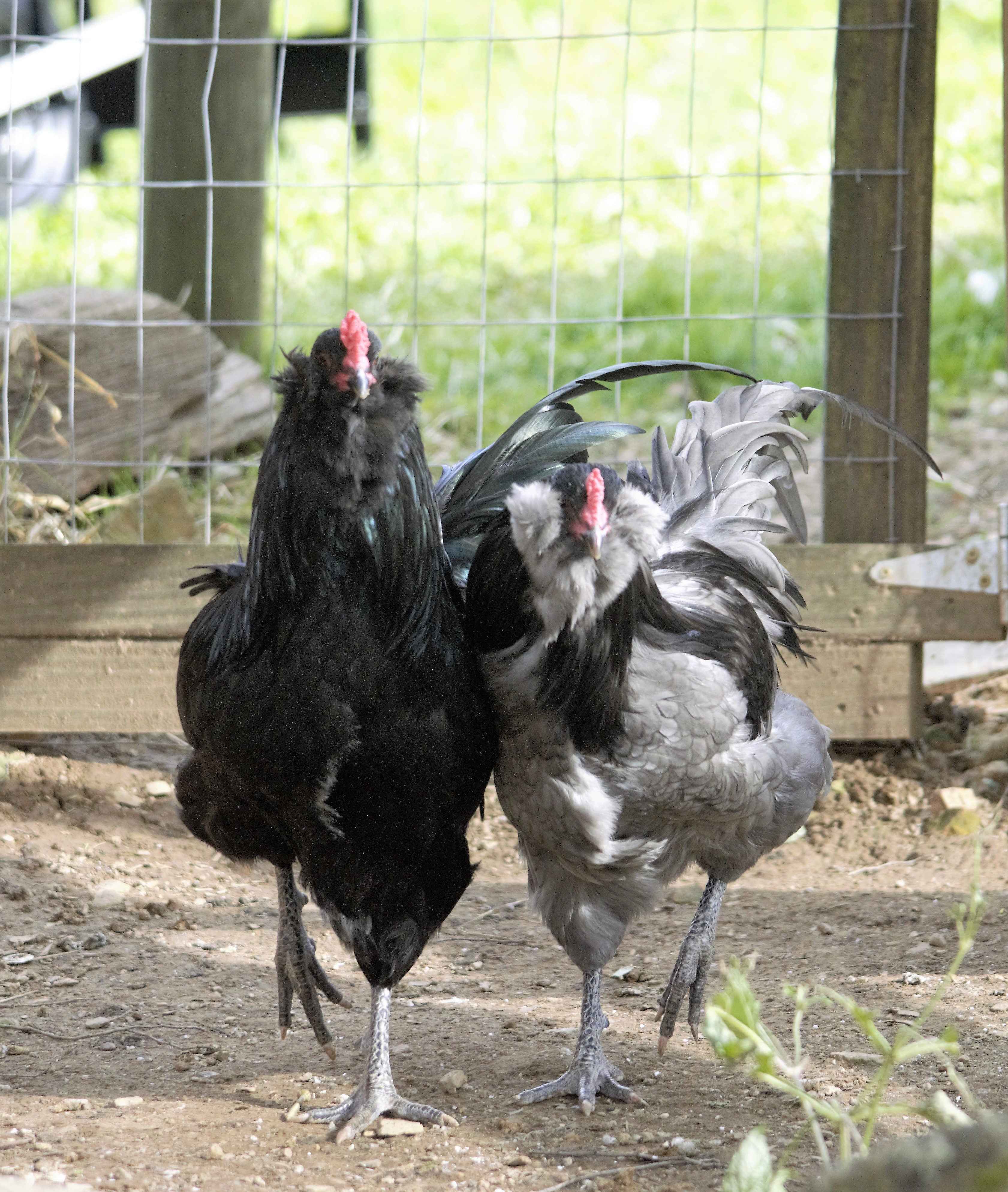
All this year, I’ve been growing out my new Ameraucana breeding stock, and they have turned out so nice! I am beyond thrilled!

In case you’re unfamiliar, the Ameraucana is a relatively new breed of chicken, having only been accepted by the American Poultry Association in 1984. They have quickly gained popularity, however, and are bred in a number of color varieties. We breed blacks, blues (which are both APA approved) and also splash. This last variety is a fun change from the more run-of-the-mill color schemes among chickens (see a picture of one of our splash pullets, right). Our original stock came from the show-stopper lines of Paul and Angela Smith in Texas.
Here at Storybook Farm, we raise four breeds of Large Fowl. By far, our favorites for personality, egg color, and overall cuteness are the Ameraucanas! They are not large birds as compared to our Light Sussex and Marans, but they are quick, bright, and funny. I love their feathery muffs that half hide their faces, while their expressive eyes peek out at you and twinkle merrily. Ours are curious, but shy. I have known people to make real pets of them, however, with a little effort–and a fair number of treats!

Ameraucanas are layers of large, blue eggs–the color of robin’s eggs! Their feather colors are beautiful: the blacks have a deep green sheen. The blues have delicate lacing on their feathers. The splash are a funky mixture of black and white. If it’s a fun factor you’re after, you’ve come to the right place with Ameraucanas!
We managed to raise three beautiful boys this year. Our black cock, especially, is large and lovely, but the other two are great as well. Because we have one of each, we can mix and match with our four blue hens and two splash hens to get all three color combinations. In case you’ve never learned this before, the “blue” gene is actually acting to dilute black coloration in feathers are achieved by breeding differing colors together. Chicks inherit one of a pair of genes from each parent. The combinations that result give the following colors in chickens:
 When there is no blue gene present in the pair, any black markings will be normally colored (i.e. they will appear black)
When there is no blue gene present in the pair, any black markings will be normally colored (i.e. they will appear black)- When there is one blue gene present in the pair, any feathers that would have been black on the bird will be diluted to blue (which can appear as anything from a slate gray to a darker, colonial blue color).
- When there are two blue genes present in the pair, any black will be diluted to (blue splashed) white. This variety is called “splash.”
We are so looking forward to being able to offer hatching eggs and day-old chicks from these parents in the coming 2019 hatching season! First, we have to brave the cold, but we are praying that they’ll all come through just fine, and we’ll have lots of beautiful babies to share come spring! If you’d like to reserve chicks for 2019, please email us today.